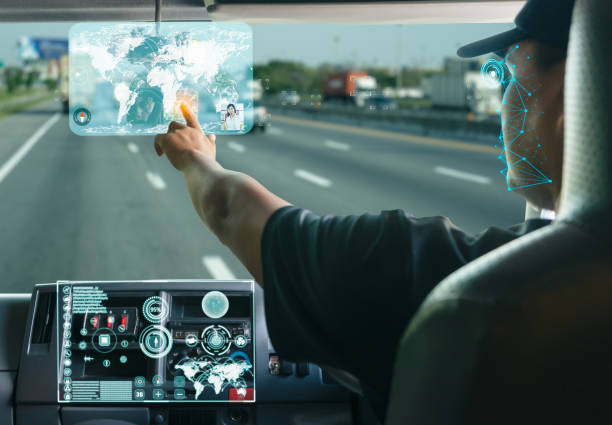
Think how you felt the first time you were in the driver seat? The excitement, that fear, that exhilaration? When you suddenly realized you had control over a powerful machine which could take you almost anywhere you wanted to visit? To a lot of people, this initial drive meant freedom, self-reliance and the start of a journey into a million wonders.
However, things have changed today and driving is not just a matter of pedals, mirrors and a steering wheel only. Technology has become a part of modern learning and road safety. Whether it comes to AI-enabled navigation or advanced driver-assistance systems (ADAS), innovations can now enable drivers to become more confident more quickly, minimize errors, and remain safe in a greater variety of circumstances.
Each time, whether it is your first driving lesson or a refresher course as a licensed driver, being nervous can easily change to competence and competence to confidence when the driving technologies are up to date.
Among the states that we present our driving learning services in Colorado, California, Illinois, Indiana, Missouri, Nevada, Texas, and Pennsylvania these advanced tools are incorporated by expert instructors at every level of learning.
Getting to Know the Digital Driving Basics:
You must also be prepared to learn the basics of driving as well as the technologies that complement them before you can have the luxury of driving the open road. Vehicles now are not only mechanical machines, but remain smart, connected and flexible.
Some of the features designed on modern cars include:
- Electric seat-shifting and mirror adjustments involving best positioning.
- The HUDs show key information on the windscreen in heads-up (HUDs) displays.
- Blind-spot monitoring that will alert you of vehicles that are obscured
- Adaptive lighting systems which controls the road and weather conditions
Knowledge of road signs is still a requisite but now most cars have camera recognition systems to read road signs and present it as speed limits or warning on your dashboard. Google Maps and Waze are navigation applications that may be used to give live hazard information, closures of roads and traffic forecasts.
During our throat training sessions conducted in Colorado, California, Illinois, Indiana, Missouri, Nevada, Texas and Pennsylvania, our instructors assist the learners to establish and operate these systems resourcefully. Whether it is connecting your smartphone so you can take hands-free calls or setting up the safety alerts, learning the car technology has become as vital as knowing how to change lanes or brake without jolting.
Tech-Assisted Parking: Making a Tricky Skill Easier
Learning to parallel park is the most feared aspect by learners over the years. A lot of drivers do not want to have anything to do with it- but technology is shifting gears.
Parking sensors, reversing cameras and 360-degree cameras systems ensure you get a birds-eye view of your environment so that you use less guesswork. There is even a park assist feature in some cars where the steering is completely controlled and you only need to control the pedals and gears.
Technology also contributes to the enhancement of spatial awareness even in its absence of full automation of the parking. A reversing camera may display accurate distance indicators so that you know where you can get quite close to objects. They also aid you in checking how close you are to another car or the curb by parking sensors.
A qualitative driving school shows how to integrate visual information on technology with more classical mirror checks, thus learners obtain an equally balanced skill. This mixed system gives you the comfort of being able to park on both occasions and with and without digital aid.
Staying Safe Behind the Wheel with Smart Technology:
Driving has always valued safety, however, in the age of technology, it is more effective to prevent any consequences than react.
With the modern safety system you can:
- Adaptive cruise control allows maintaining the safe following distance
- Be on your lane through lane-keep assists and lane-departure warnings
- Prevent crashes obstructed by forward collision warnings and automatic emergency brakes
- Catch incidents on dashcams to protect legally and insure
- Check tire pressure which may cause blowups
These additions do not substitute defensive driving but are a sort of back up eyes and reflexes, they provide a quicker response in case of an emergency.
Moreover, hands-free devices like Apple CarPlay and Android Auto enable you to receive calls, text or navigate with only the use of voice commands so as not to lose concentration on driving.
In our service states during driving lessons we do not only teach drivers how these features can be useful, but also how they should use their own judgment in the situations these features are not helpful.
Using Technology to Track Your Progress:
The other advantage of learning how to drive in the digital age is the chance to know how your skills have been improving. Cars are also able to record driver profiles that keep track of driving patterns, braking patterns and fuel consumption levels of many cars. Apps and simulators are part of some driving schools such as ours which would allow students to have a feel of driving before they get on the real road.
Driving simulators may simulate rain conditions, fog, traffic in thick traffic, or at night in the controlled and safe setting. This creates the familiarity to the difficult situations and once you encounter such situations on the road you are not so threatened by it.
We also integrate the use of route tracking devices (GPS) into the lessons so that you can see exactly where you practiced and how good your performance was in various areas, city streets, highways, etc.
Tech-Supported Learning in Different States:
Although the regulations of driving are relatively similar throughout the country, driving lessons across states have different conditions on the road, traffic signs, and uses.
-
The Colorado learners usually practice with technology that is helpful in driving the mountains like the downhill speed control tech.
-
Classroom training in California trains the driver in manoeuvring around heavy-traffic cities using adaptive cruise control and GPS navigation applications.
-
To drive on icy roads Illinois and Indiana students enjoy weather-related driving technologies, such as stability control.
-
The training in Missouri can encompass rural navigation and the hazard detection tools.
-
Lessons in Nevada can include desert driving tactics and systems of temperature monitoring.
-
The Texas students are usually preoccupied with the long-distance driving feature in lane-keeping and fatigue warnings.
-
The Pennsylvania training consists of Slope training and rain-handling of traction control systems.
Localizing tech-aided training to every setting makes learners more than ready to face local issues of on-road driving.
The Road Ahead: Why Technology Matters in Driving Education
It is no longer just memorizing the fundamentals in learning to drive. In the modern-day interconnected world digital skills are driving skills. Becoming a more competent and safer driver entails learning how to connect your phone, understand sensor notifications and when to be responsible in using driver-assist systems.
All of the confident drivers at some point in their lives were in the same position as you in now; hesitating, insecure, and with lots of questions. Today the difference is that the learning curve is shortened by technology. Together with good teaching and regular driving, it will enable you to cope with previously known roads and open up new opportunities without fear.
Whether you call Colorado, California, Illinois, Indiana, Missouri, Nevada, Texas or Pennsylvania home, our high-tech driving course will make you feel like you have an advantage on the first day. Not only will you be taught on how to maneuver a car but also how to utilize its technology as a tool in driving.
Final Thought:
Learning how to drive safely, and in general, confidently means more than being able to drive a vehicle: it is the ability to reclaim control over who has it and when far before it comes to taking the wheel. We combine the best in ancient arts along with the new motor car technologies so that the drivers are prepared with the realities of modern roads.
Thus, whether you are ready to take your first test or are just intending to update your skills, just keep in mind the following statement: the road to the digital world is open and with the use of the right technology, every inch of it will be with you.




